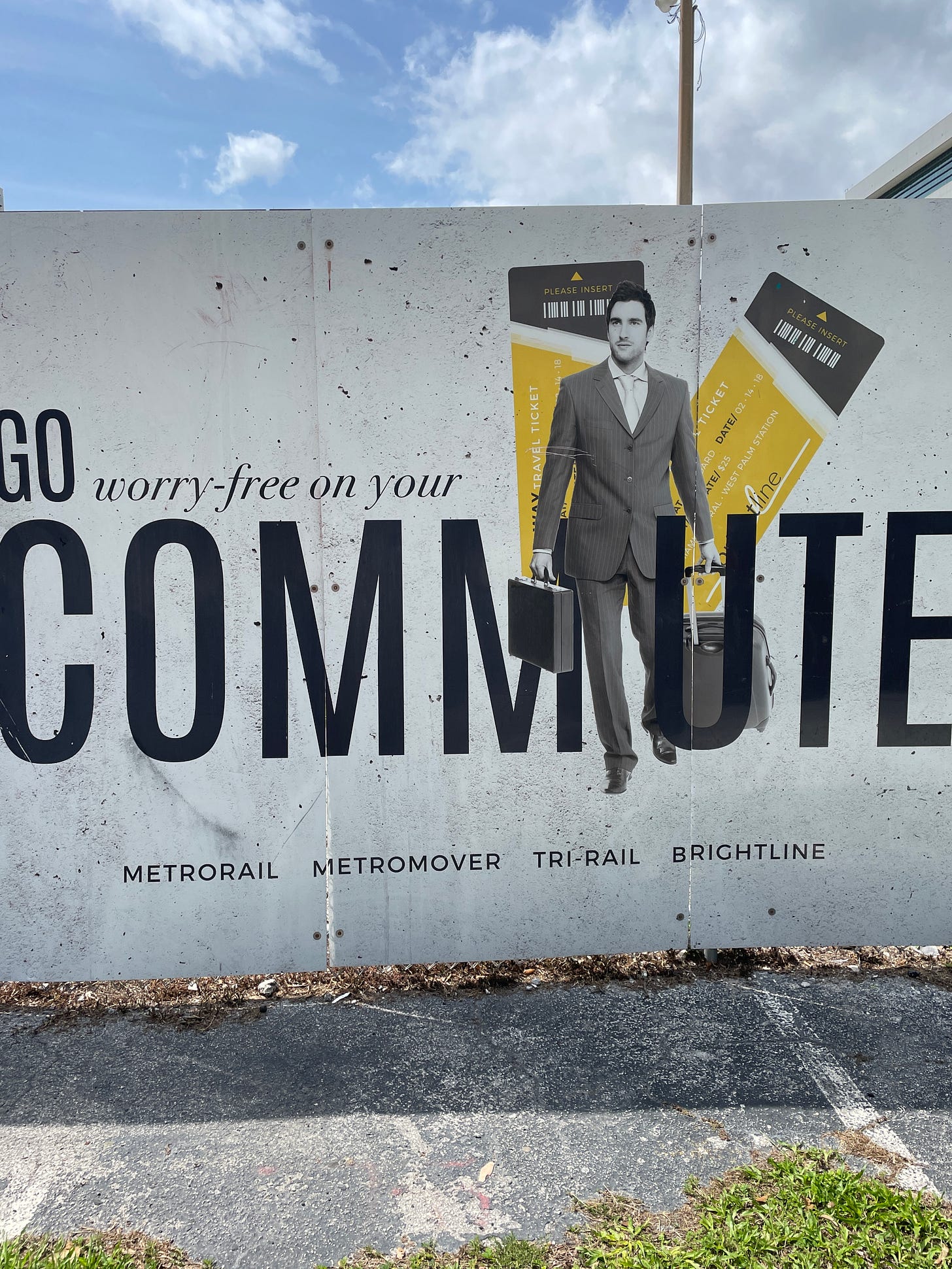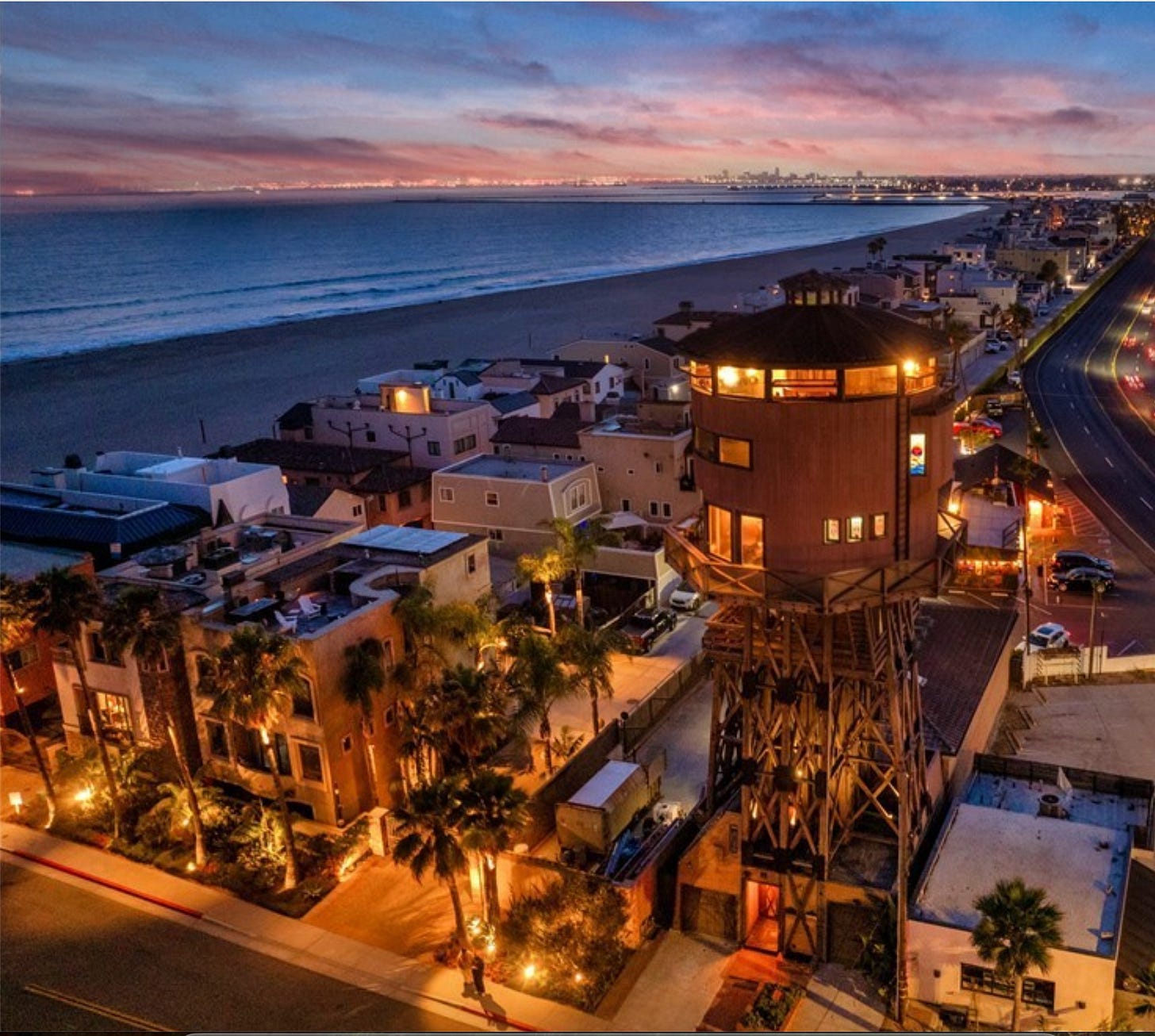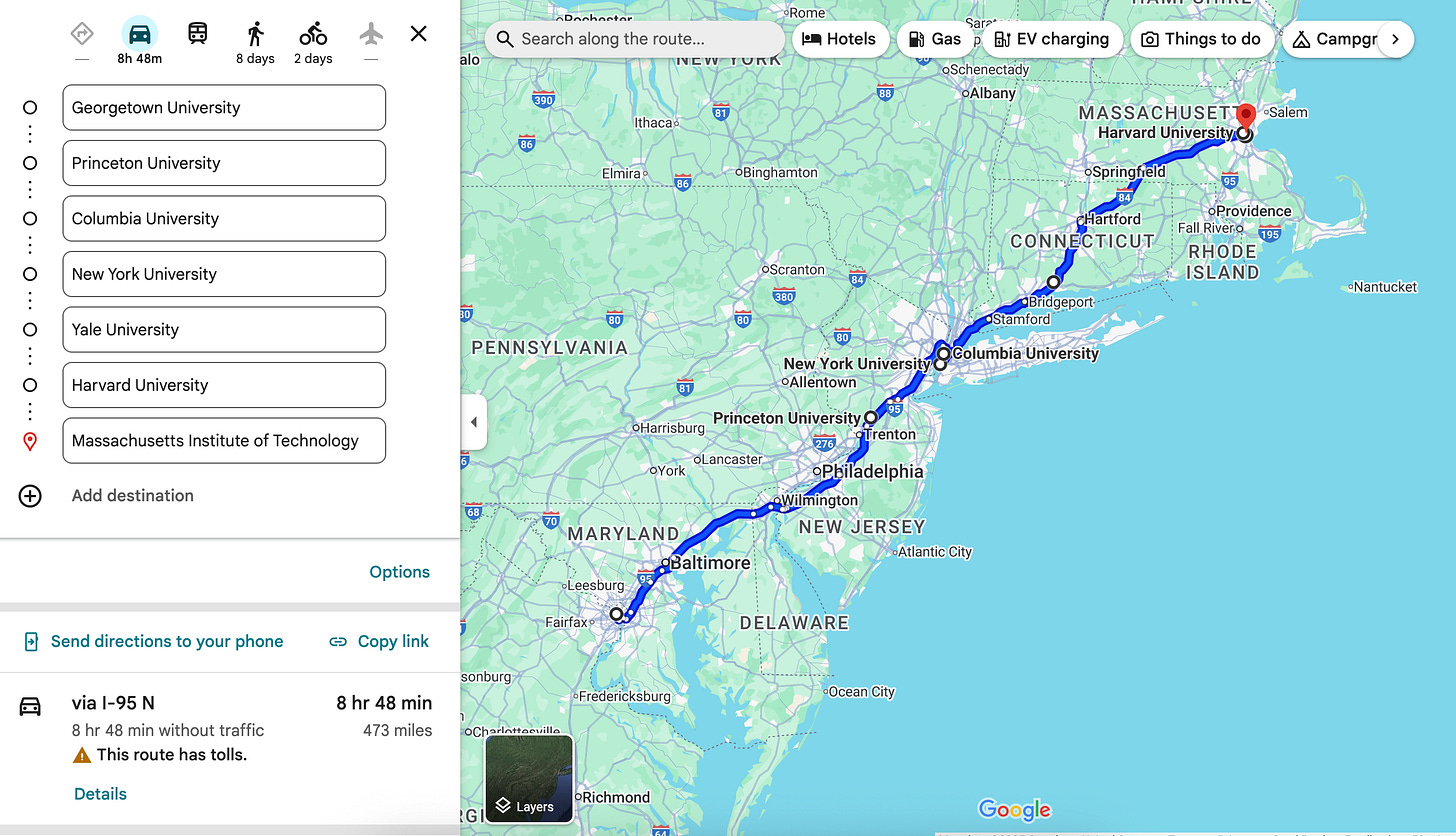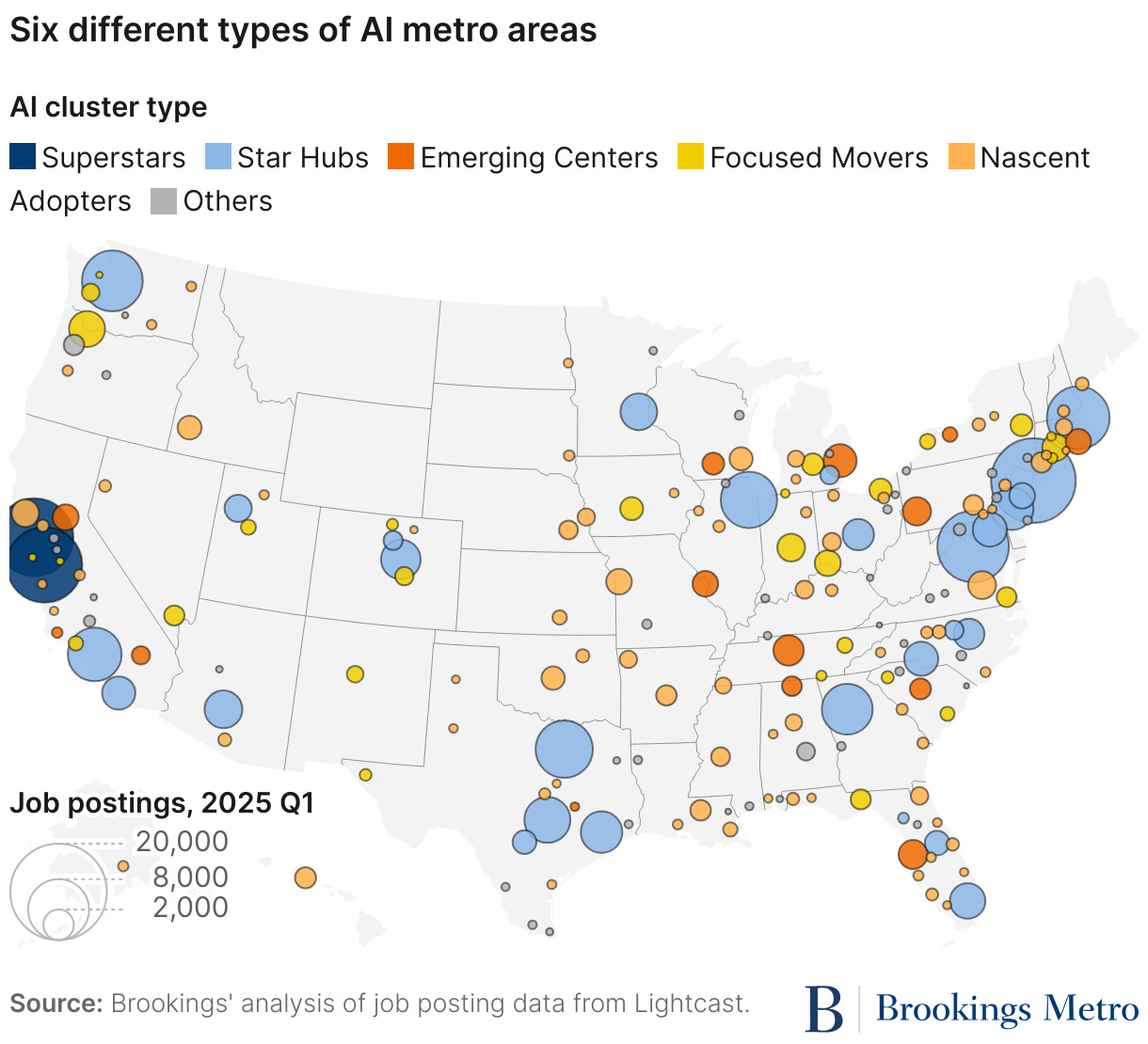Brightline Killer Train Framing, $300K College Tour, & More
Around the College Towns: Links and commentary related to urbanism and higher ed for the week of June 12 - July 18.
Note: I have been in a writing retreat this week, so I haven’t been able to fully dive into my normal news slate. I hope to be back full next week. Nonetheless, here is my weekly links roundup article on urbanism and education for news that may have fallen through the cracks.
Brightline Death Numbers
The Miami Herald published an exposé on the high rates of death from the Brightline passenger rail line. “Brightline remains the deadliest major passenger railroad in the United States,” stated the article, which carries a sizeable byline with six authors. Brightline has been the lone bright spot in new train service in the US recently, so the findings were disappointing.
However, in reading the article, almost all of the deaths were related to some kind of “risky behavior” (the author’s own language) or suicide. Almost none, if any, have been pointed to active mismanagement by the train operator.
He zigged and zagged his Maserati around cars stopped at the tracks in Oakland Park and sped around a gate.
As she inched her Honda forward at a railroad crossing in North Miami in March 2023… Traffic wasn’t moving. The gates came down in front of her, and she was stuck on the tracks.
“Every person who has died on our railroad has either chosen to end their lives or been under the influence of drugs.
Urbanists were annoyed by the framing because the article does what so often happens in these debates: completely ignores death tolls from cars. One journalist even incredulously posed on X, “Imagine if a US carmaker… killed someone every 13 days,” in a shocked tone.
Mark R. Brown, AICP, a city planner who writes at Car Free America, was quick to point out on X, “cars kill 40,000 people a year.” He continued, “One is a news story. The other is a statistic.”
Even just in Florida, roughly 3,400 people die per year from car-related deaths, which is almost 70 deaths a week. So the comparison to the Brightline numbers does seem obtuse.

In the end, though, people are dying, and the service in Florida is still deadlier than other rail services around the country. Rather than framing this issue as a killer train problem, within the article itself it seems Florida has more of a governance issue when it comes to safety.
Proposed safety legislation has constantly failed to pass the state legislature. Localities actively ban safety measures such as warning whistles. Banning cars in certain streets or crossings would also be a help, something that a company cannot mandate.
For its part, Brightline has made recent investments into safety features, such as a $15.4 million US Federal government grant to seal intersections (e.g. stopping drivers from driving around gates). I hope that the fixes can save lives. But it seems rail must go above and beyond to keep its PR up in a world inundated with car externalities that are taken as the norm.
How Much Would You Pay for a College Visit?
The college visit is a beloved classic American tradition. Late in high school, driving with the parents to see potential places to spend the next four years and a large chunk of change. So, of course, there is big business around it now.
One company is $300K for a luxury college tour that includes five-star hotels, flights on a Gulfstream jet, and a chauffeur for two people (presumably the student and one parent [sorry, dad might have to sit this one out]). The package also includes admissions advice and strategies.
The four-day trip (yes, only four days…) will bring the little prince or princess to NYU, Columbia, Princeton, Yale, MIT, Harvard, and Georgetown. The funny part is that all these places are close to each other, so there is no need for a private jet. The Amtrak is probably easier!
The CEO of IvyWise defends the steep price, “Certainly people who can afford their own private jet could take their own private jet somewhere, but they wouldn't have an IvyWise counselor on board,” said Kat Cohen to Luxury Travel Advisor. “In terms of services before, during and after, the value is a very high take-home value.”
While there has been a general sentiment souring on higher ed in the US, this kind of thing illustrates that the appetite for elite education is still far from being quenched. The wealthy from the US and around the world are still trying to send their kids to the Ivy League. Take notice.
Links I’m Reading This Week
Education
Is this the end of the Master’s degree as we know it? One op-ed argues the new student loan limitations will burst the bubble.
Stanford professor’s home listed for $5.5 million. Long gone are the days when any (regular) professor could afford such a place. Too bad.
Larry Ellison passes Zuckerberg as the world’s second-richest man, and reaffirms his support of the Ellison Institute of Technology (EIT) at the University of Oxford. It does make me wonder why he chose a UK-based university instead of in the US…
An AI conference scheduled to be hosted in San Diego had to add a second venue in Mexico due to problems with attendees getting visas to the US. This kind of thing doesn’t bode well for US aspirations of being an AI leader.
Urbanism
Speaking of AI, Brookings released an analysis of which areas of the US are most poised to take advantage of the AI boom. While the Bay Area is the clear winner, there were some cities that surprisingly ranked highly as “Star Hubs” such as Dallas and Atlanta.
A research lab in China has tested a maglev train that is faster than airplanes. The US continues to be left in the dust in terms of trains.
It seems LA is already abandoning the promise to be a ‘car-free’ Olympic Games. I will have a full article related to this issue soon.
LA is getting private security patrols that resemble a private police force.
But if you want to come live south of LA with me here in Orange County, there is a water tower converted into a beautiful home in Huntington Beach. It is seriously stunning. It’s yours for $5.5 million.

Via Redfin. A man fed up with go-karts in Tokyo was arrested for trying to burn down the tourist business and its property. I guess over-tourism is grating there, too.
Waymo hits the 100 million-mile marker for miles driven by their autonomous vehicles.
Around Substack
Note: I also think it’s important to stay connected to the growing Substack community. Here are a few I am reading this week:
Andy Boenau at Urban Speakeasy is right up my alley this week wondering if colleges can do a better job of instilling being car-free places. While I think he might give our sector a bit too much credit in how institutions shape the areas outside of campus, I do agree that too much is made of parking fights at universities.
Speaking of parking… those garages are enormous expenses that are rarely questioned, which is funny because they often stand in defiance of a college’s stated goals of environmental and financial stewardship.
A typical campus garage holds about 400 cars and costs $30,000 per parking space. That works out to a $12 million price tag. Administrations think these garages are an absolute necessity, but a mindset shift could save them a fortune.
Mark Kennedy at the Real Gaijin has a post about tourism in Japan, but for rural areas. When I was there, a lot of people told me to escape the city and head to off the beat places. I guess that is a common message!
data that show in 2024 foreign visitors spent 160 million nights in Japan—a 40% increase from the previous year. Rural regions experienced the most significant growth, with Ishikawa and Ehime more than doubling their number of foreign guests… Japan’s tourism rebound is no longer just a big-city phenomenon. Regional areas are claiming a larger share of the market.
Finally… NIMBY Pixar Trailer Dropped
A few weeks ago, some urbanists got annoyed with Pixar after the description of their upcoming feature made it sound like it was a NIMBY movie. I suggested we all just chill a bit, wait, and see. Well, we can finally see, a bit at least, as the trailer for Hoppers has dropped.
So that’s it, just the general concept of hopping into a beaver’s brain. There was no real mention of the supposed NIMBY plot about the developer destroying the dam. I guess we will just have to keep waiting.
Honestly, this just doesn’t look that good regardless of the message. Pixar has long lost its way, and I don’t think this film is going to change that. The magic over there is over. It happens.







Appreciate you drawing attention to the much deadlier impacts of car culture — I thought the same thing when I saw these headlines about Brightline
Thanks for the mention!